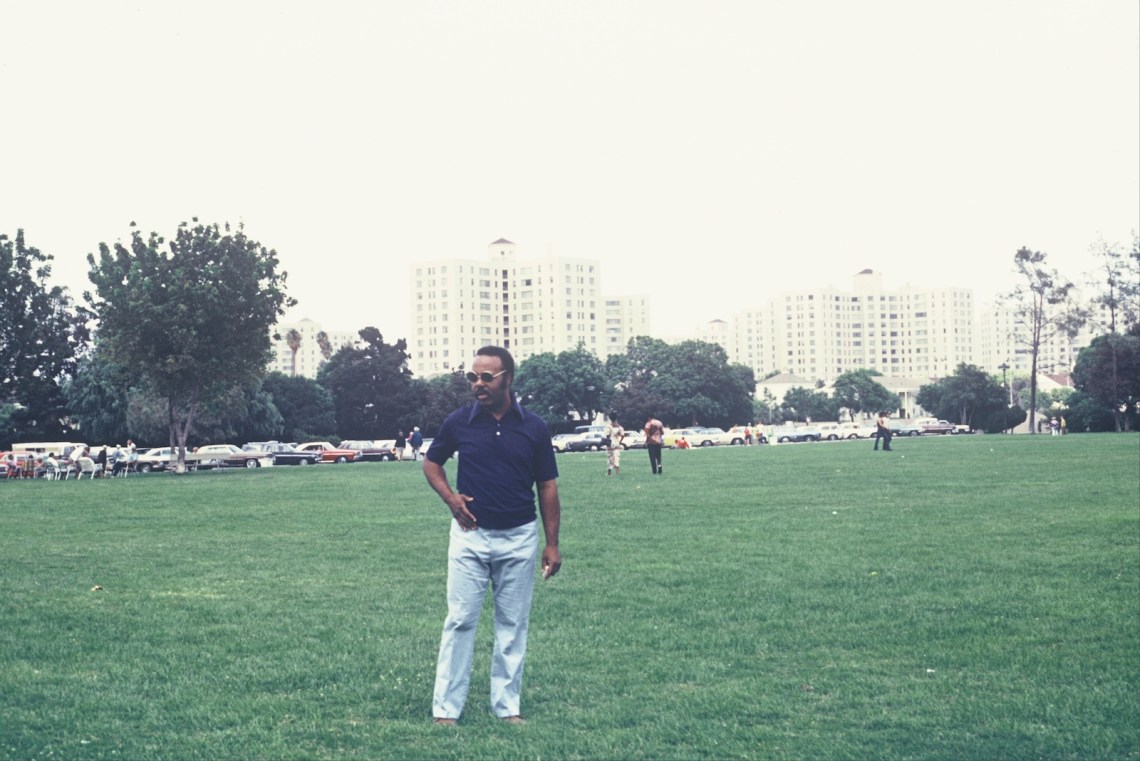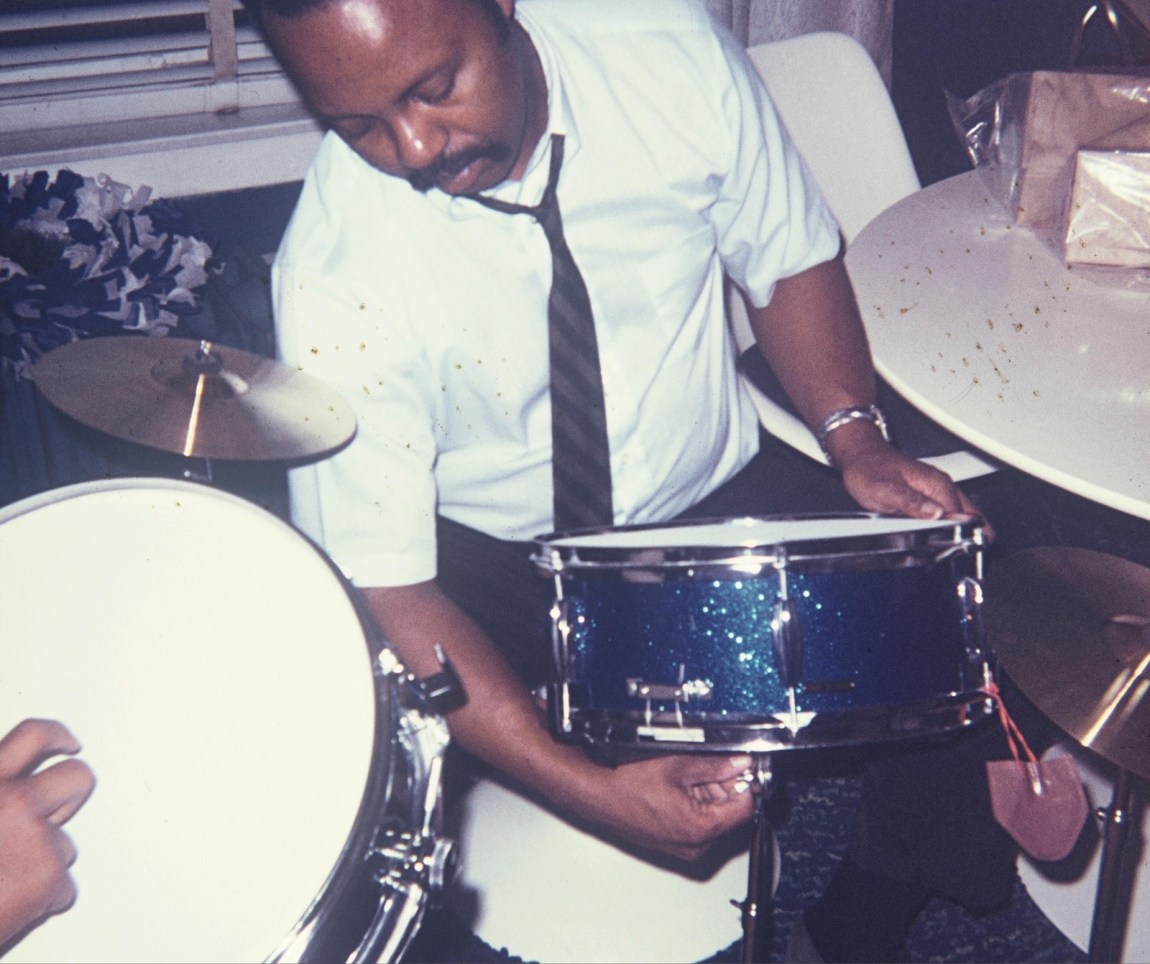By the time the Chicago producer, arranger, and composer Charles Stepney died of a heart attack at forty-five in 1976, he had spent a decade working behind the scenes on soul, blues, and R&B records that brought ideas from the avant-garde to commercial pop, but he had never recorded an album under his own name. In his years at the center of Chicago’s music business, he dedicated his career to refining and transforming other artists’ work: enriching it with orchestral scope and color, reshaping it with surprising structural and conceptual elements, and writing compositions that stretched the formal rules of the pop song but remained danceable and hummable. Among DJs, hip-hop producers, record collectors, and other aficionados, Stepney’s work has come to exemplify Black Chicago’s monumental contribution to American musical culture in the 1960s and 1970s: its mix of commercialism, tradition, and Afrofuturism.1
Stepney’s Chicago was the city of Chess Records, whose electric blues releases sparked the rock and roll revolution; the city where Sun Ra, the avant-garde composer and big band leader, forged his aesthetic; the city of the Association for the Advancement of Creative Musicians (AACM), in which the Art Ensemble of Chicago, Anthony Braxton, and Stepney’s friend Muhal Richard Abrams built a structure for radical Black creativity and education. It was a city with world-class recording studios, advertising agencies that had budgets for jingle sessions, and one of the country’s preeminent symphony orchestras, whose members picked up freelance recording gigs on the side. Blues band regulars, Sun Ra Arkestra alumni, AACM radicals, and Chicago Symphony Orchestra members all met in the studio when Stepney was in the producer’s chair.
After a discouraging period as a jazz vibraphonist, his studio work began in 1966 as house arranger at Chess. On records like Muddy Waters’s Electric Mud (1968) and Howlin’ Wolf’s The Howlin’ Wolf Album (1969), Stepney’s production pushed blues into psychedelic overdrive with thundering drums, off-kilter riffs, and extensive use of fuzzboxes and dense artificial reverberation. It was a controversial choice. The cover of Wolf’s album says, in bold type, “He doesn’t like it.” The production may have frustrated the blues elders, but it inspired rock musicians like Jimi Hendrix and Led Zeppelin. Stepney then made a series of buoyant records with the jazz pianist and surprise hitmaker Ramsey Lewis, spiked with atonal orchestral gestures and electronic textures that would not have been out of place in the work of a composer like Edgard Varèse. During the same period he made five albums of unclassifiable psychedelic pop/folk/R&B for Rotary Connection, six if you count Hey, Love (1971) by the New Rotary Connection—which you definitely should, since it includes “I Am the Black Gold of the Sun,” five minutes and forty-four seconds of dizzying vocal harmonies, distorted guitar, and heavy funk. At the time of his death, Stepney was helping build R&B masterpieces like That’s the Way of the World (1975) by his longtime friends and collaborators Earth, Wind & Fire.
Step on Step, a new collection of home demo recordings released in September by Chicago’s International Anthem label, the first album to appear under Stepney’s name, gives an intimate look inside both the mechanics of his artistry and his home life. Stepney was a family man. His daughters, who compiled the record and narrate it with charming anecdotes about their father, remember him as a lover of science-fiction TV (especially The Twilight Zone), a road tripper, and the meticulous keeper of a basement workshop packed with gadgets. Step on Step is the sound of a craftsman taking joy in these tools, from the growling smoothness of the Fender Rhodes electric piano to the charmingly stiff grooves of early drum machines and the squelchy bends of the Minimoog synthesizer. Stepney had one of the first off the Moog assembly line.
The pleasingly rough recordings that make up Step on Step are a sketchbook in sound, showing us speculative ideas that were never developed further, as well as the skeletons of Stepney masterpieces like “I Am the Black Gold of the Sun” and “That’s the Way of the World” without the instrumental and vocal colors he later added in the studio. In his demo of “Black Gold,” we hear Stepney work out a complex pattern of odd time signatures, juxtaposing his time-shifting piano and nylon-string guitar parts against a rigid drum-machine cymbal pattern. It’s a gesture that wouldn’t be out of place in a piece by Dave Brubeck or Don Ellis, two jazz composers whose popular records Stepney certainly would have known. His odd time signature patterns, rendered in semi-polished home studio demo form, are much more flexible and seductive than those in their hits “Take Five” or “Electric Bath.”
Advertisement
The fully produced version of the song by the New Rotary Connection both simplifies and explodes the piece the demo outlines. The first section—I hesitate to call it a verse in this not-quite-standard song structure—preserves a version of Stepney’s piano part, but now it’s in a groovy 4/4 feel, with distorted rhythm guitar from the session regular Phil Upchurch. Layers of harp and strings accrue until they give way to a shorter section in 3/4 time, building toward one of Stepney’s trademark harmonic checkmates, a climax of vocal and orchestral bombast. In a more typical song form it might be called a bridge. Then the voices, guitar, and orchestra riff over the first pattern, a casual meeting of musicians in a cavern of psychedelic atmosphere. The second section repeats—a bridge becomes a chorus. All that remains from the demo is the nylon-string guitar, now in the form of a vaguely flamenco-flavored intro; the melody; the simplified piano riff; and the strange cyclical form, somehow both a song and not a song, pop and not pop. It’s music that could only have emerged from Charles Stepney’s vision, one as vast as the universe and as specific as a basement in the South Side of Chicago.




